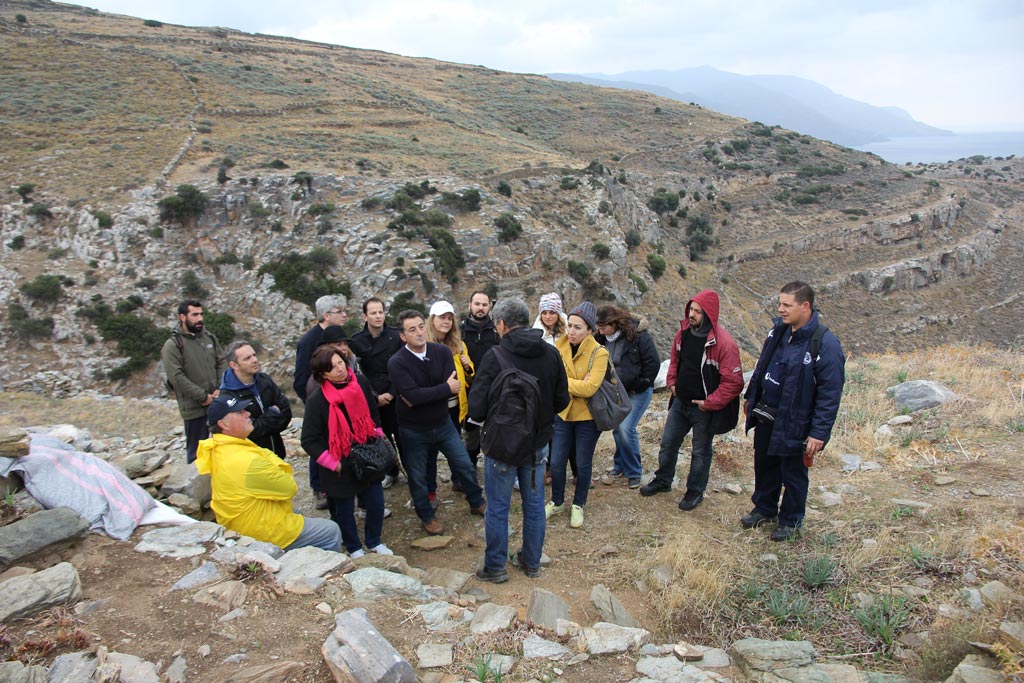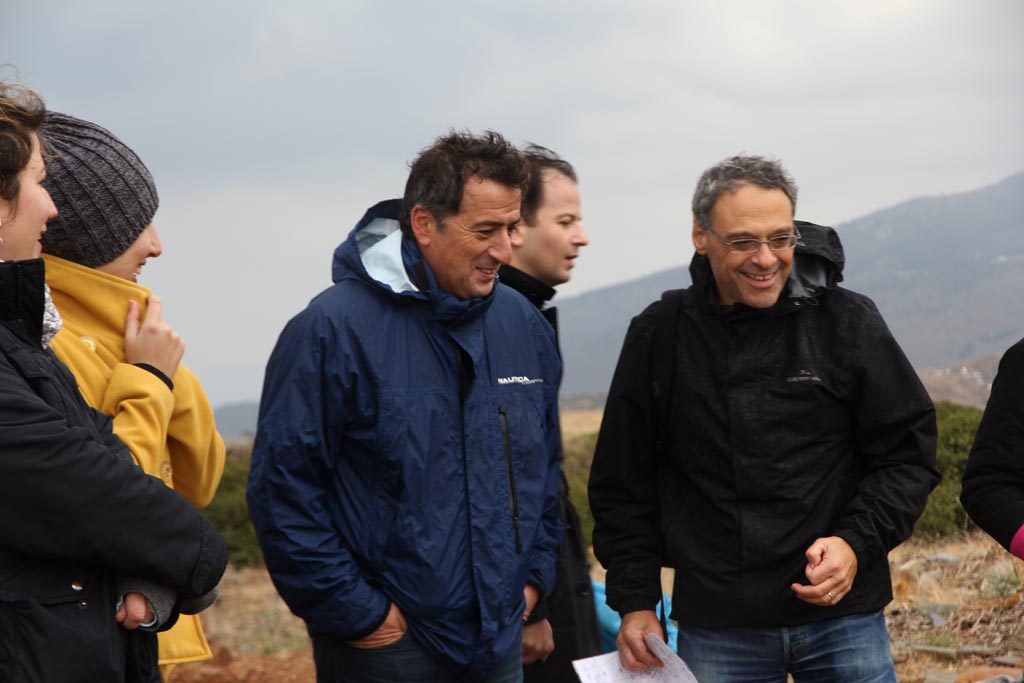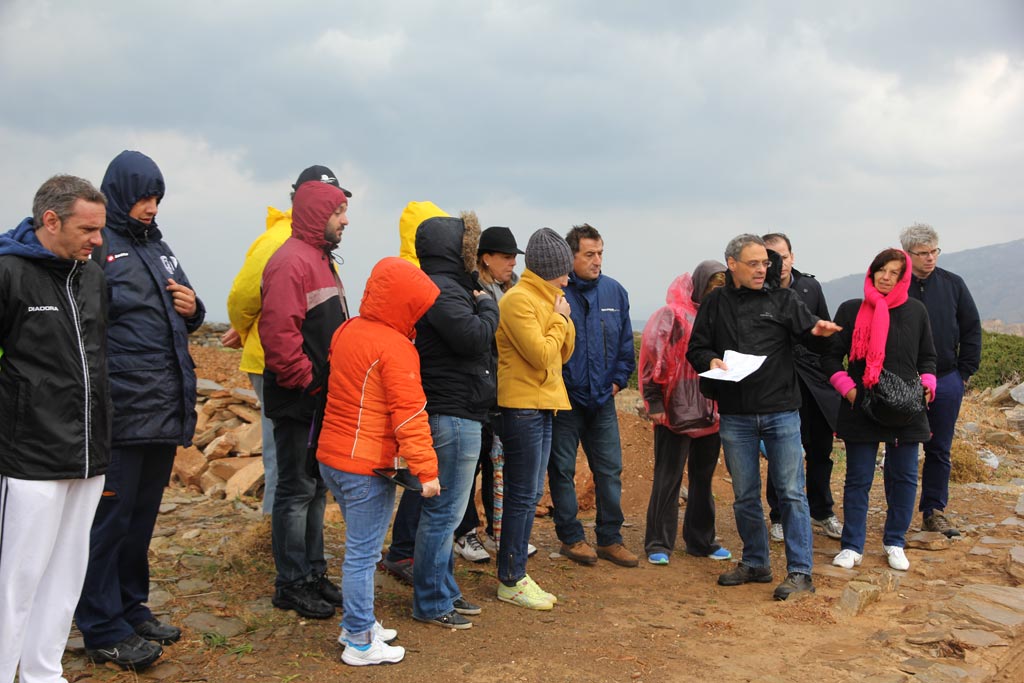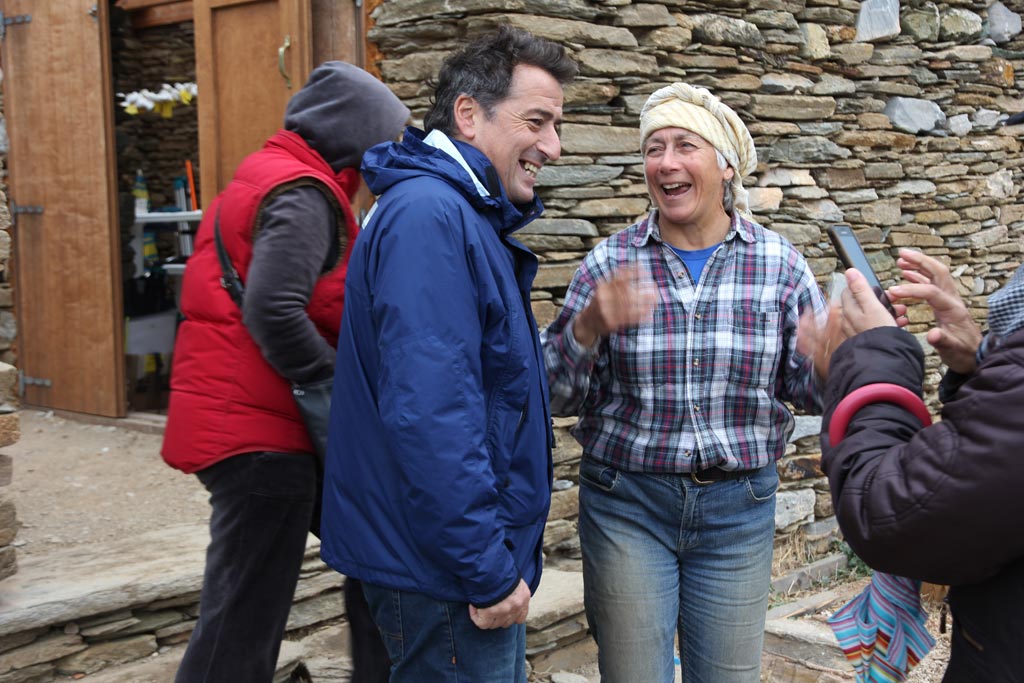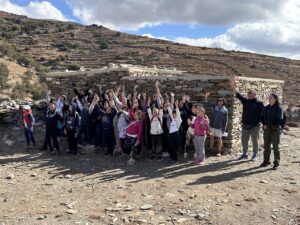
On Saturday 1 November 2014, the Mayor of Andros, Mr Theodosis Sousoudis, visited Zagora. He met the three project directors, Professor Meg Miller, Associate Professor Lesley Beaumont and Dr Stavros Paspalas.
The Mayor and his group were then given a tour of the site by Stavros, who took them to each of the excavation areas, and explained what work was being done and what was being discovered in each area.
Through these photographs, you can share some moments of the tour, which was appreciated by the Mayor and his group.
